The famous cat temple in Tokyo, Gōtokuji was one of my favourite things to do in Tokyo. Visitors from across the globe are drawn to Gōtokuji Temple’s peaceful grounds in Tokyo’s Setagaya ward, where hundreds of ceramic lucky cats greet you with raised paws.
As the birthplace of the Maneki-neko (beckoning cat), this Buddhist temple offers a unique cultural experience in Tokyo – and the adorable cat train on the Setagaya Line is the perfect way to get there.
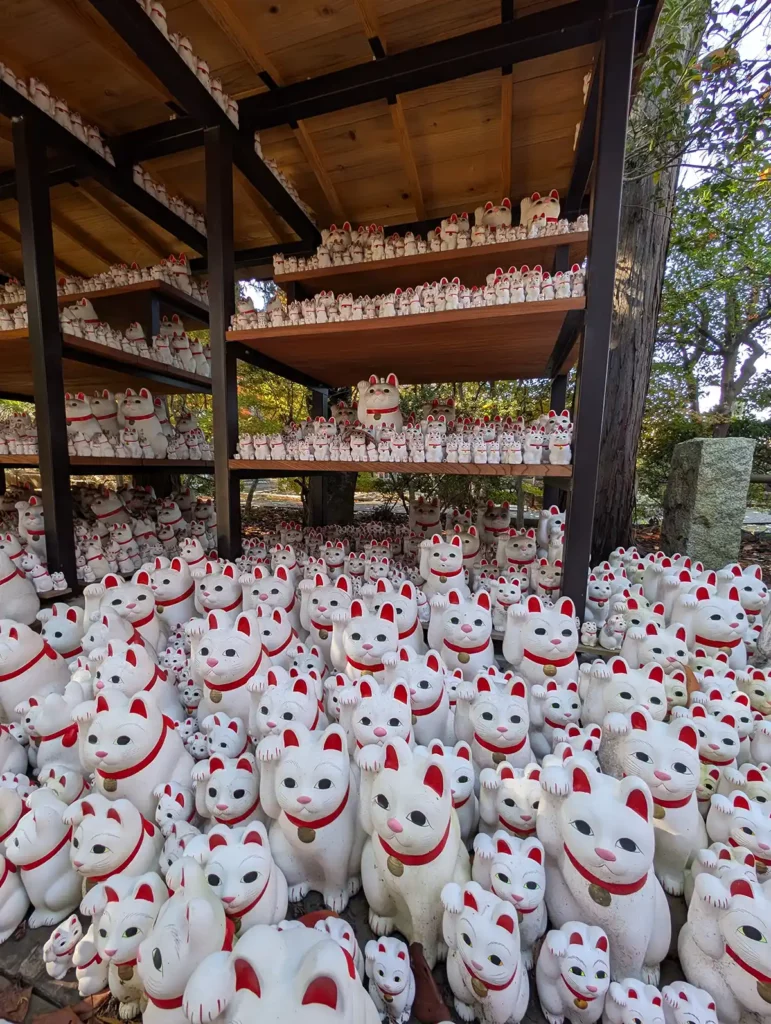
About Gōtokuji Temple and the lucky cats
The Maneki-neko (beckoning cat) story traditionally dates to the 17th century, when a poor temple priest kept a cat named Tama despite the temple’s limited resources.
According to temple records, Lord Ii Naotaka from the powerful Ii clan was sheltering from a storm near the temple when he noticed Tama appearing to beckon him. Intrigued, he approached the temple, and moments later, lightning struck the spot where he had been standing.
Grateful for his life being saved, Lord Ii became the temple’s patron, bringing prosperity and prominence to Gōtokuji. After Tama’s death, the priest commissioned the first Maneki-neko statue in the cat’s honour.
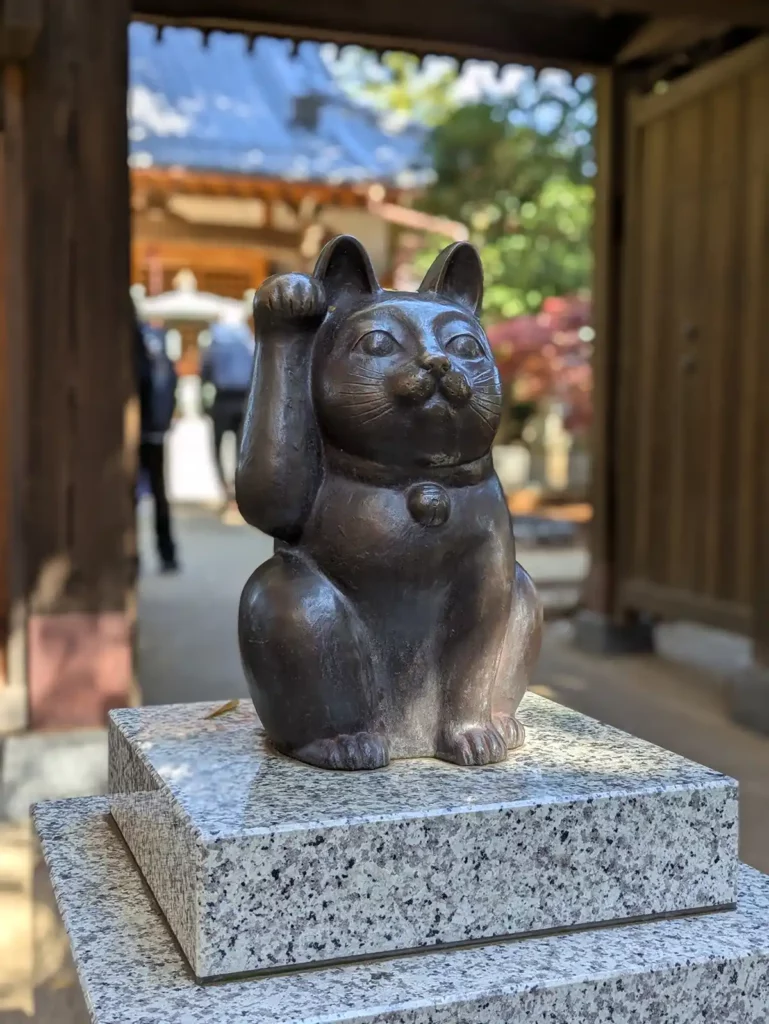
The temple became known as the birthplace of these lucky cats (maneki-neko), which have since become a worldwide symbol of good fortune.
Unlike many commercial Maneki-neko statues seen elsewhere, Gōtokuji’s cats have a simple design, reflecting their spiritual origins. Some lucky beckoning cat figures hold a coin in their paw, but the Gōtokuji Maneki-neko’s paws are empty, showing that it’s not the lucky cat itself that brings good fortune, but that being open and grateful in your life creates the environment for good luck to find you.
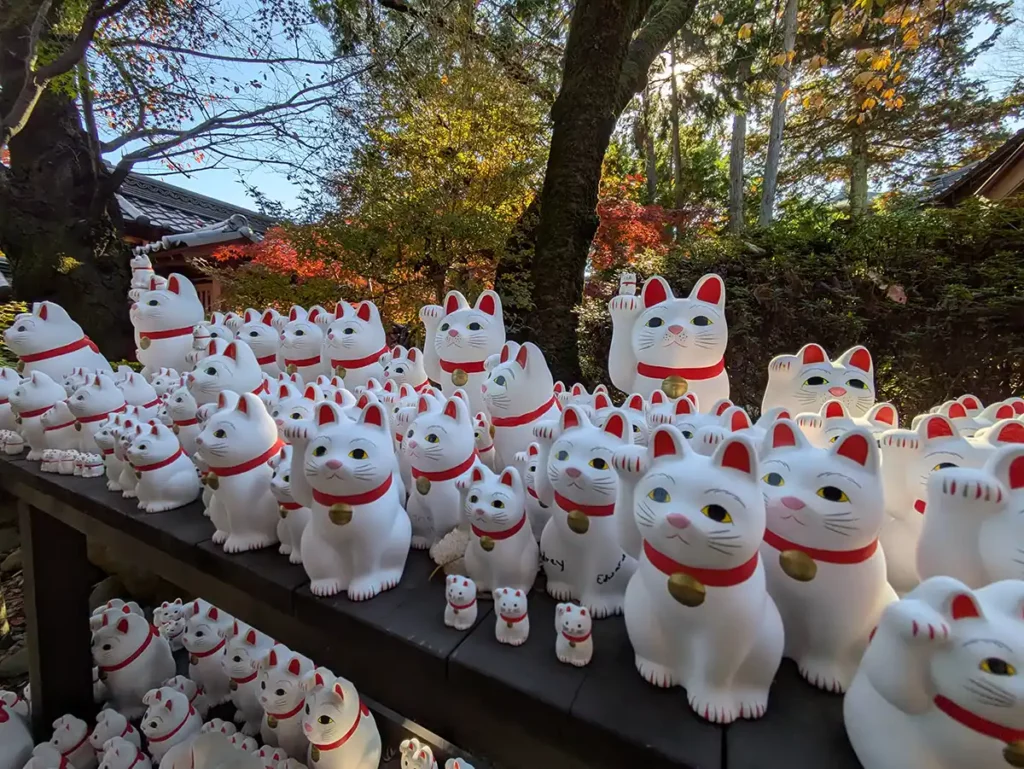
How to visit the cat temple in Tokyo
You’ll find Gōtokuji Temple in a residential area of Setagaya, western Tokyo . The temple opens daily from 6am to 5pm. If you want to buy a Maneki-neko figure or obtain a goshuin stamp, then you’ll need to visit between 8am and 3pm, when the temple office is open. Entry is free.
You don’t need to pray at the temple during your visit, but you should dress respectfully, keeping shoulders and knees covered. While in the temple you should be calm and quiet; the lucky cats are very cute but it is a sacred place of worship.
What to see at Gōtokuji temple
As well as the lucky cats, the Gōtokuji temple complex has several beautiful buildings showing different types of Buddhist architecture.
Butsu-den is the Buddha hall at Gōtokuji. It was built in 1677 and is the oldest building at the temple.
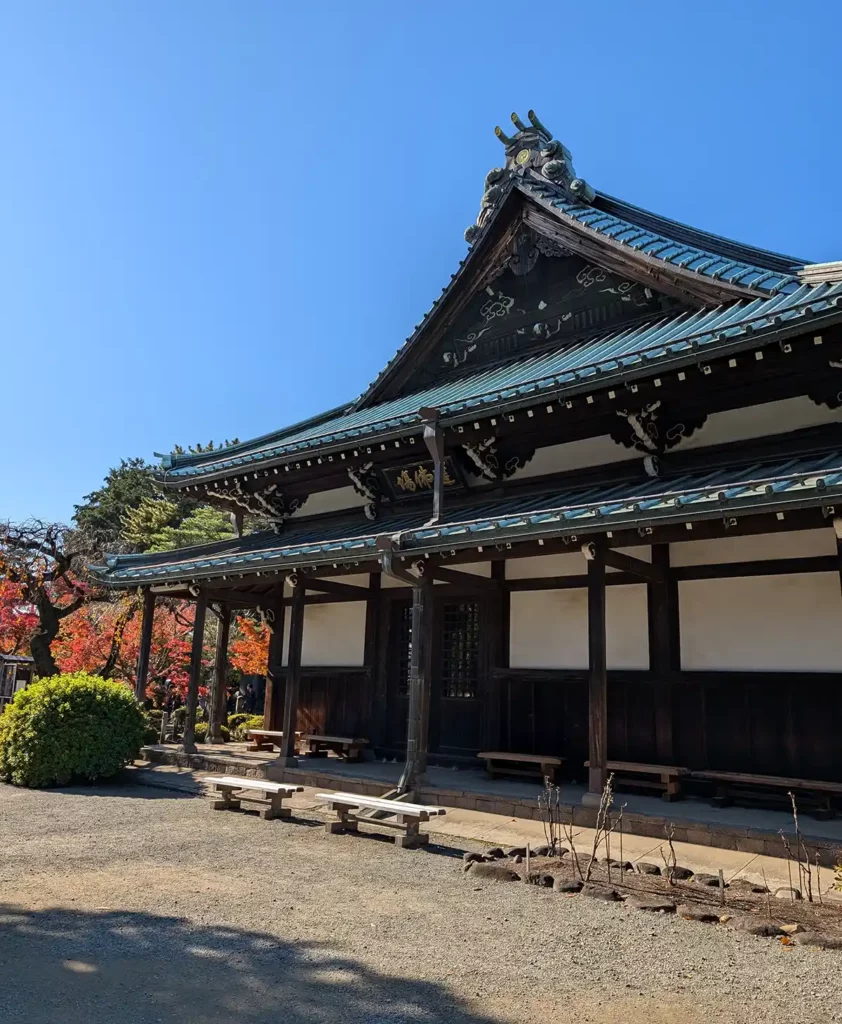
Ho-do is the main hall. It was built in 1967 and holds a Ii family portrait.
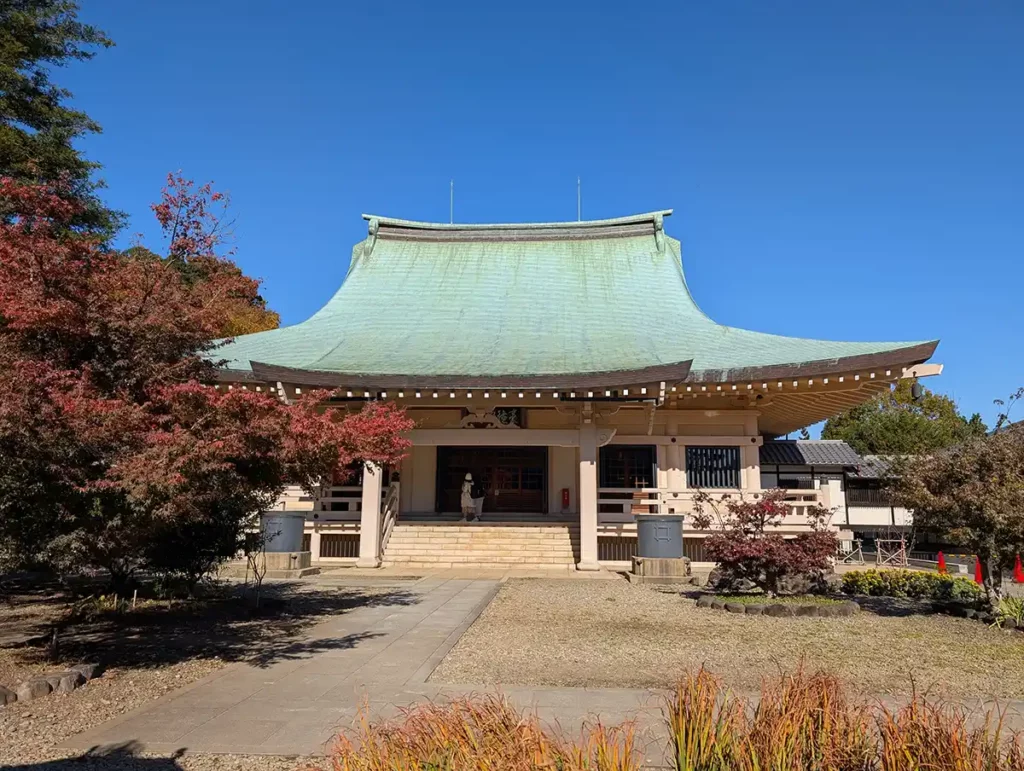
Sanju-no-to is a spectacular, three-storey pagoda and was inaugurated in 2006. It holds three shrines and is one of the prettiest buildings at the temple.
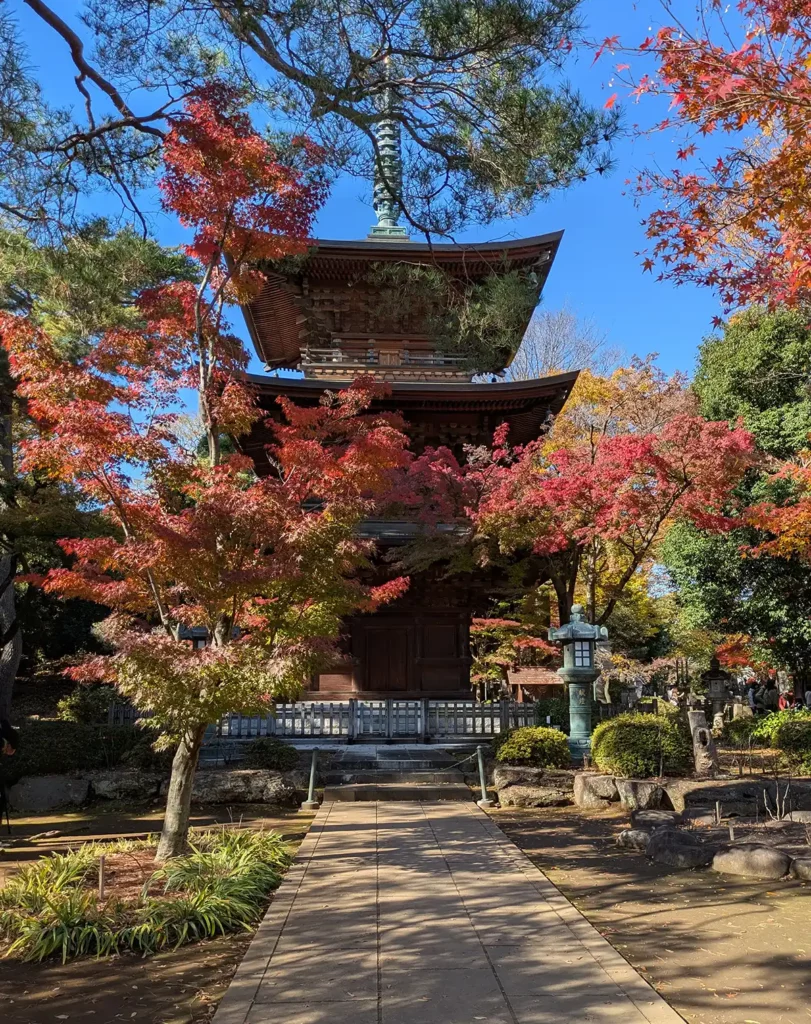
The huge Bonsho bell is close to the main entrance of the temple complex. It’s one of the most historic Buddhist bells in Tokyo.
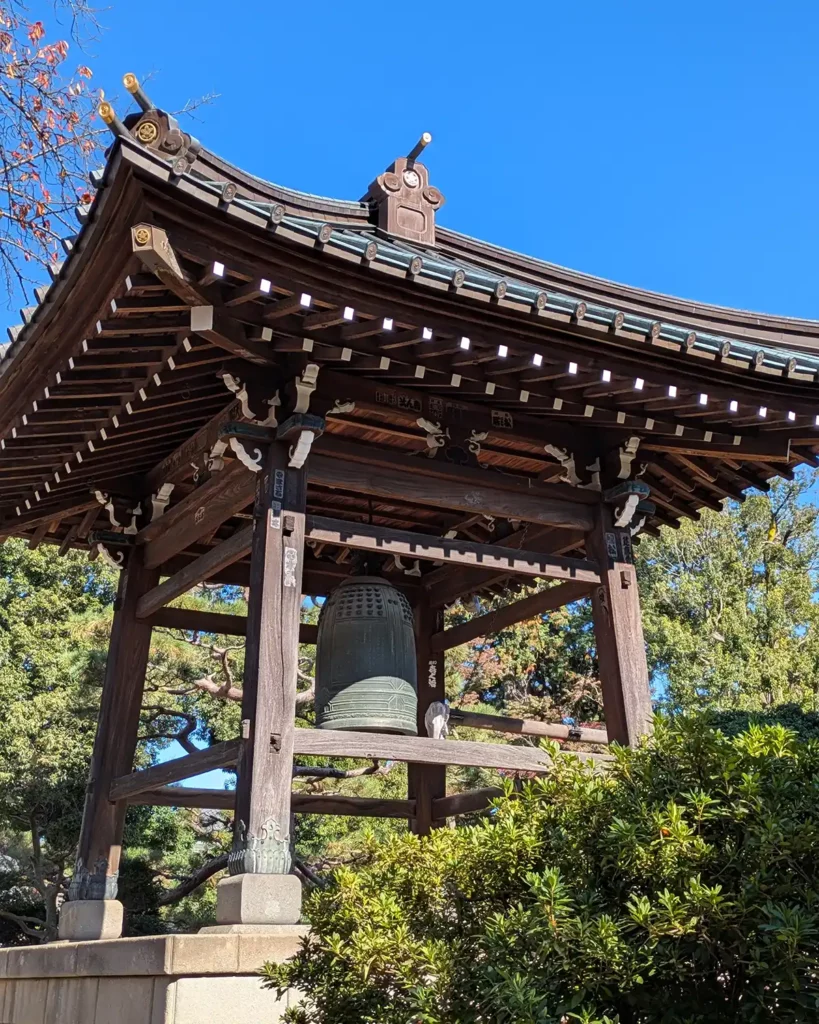
The Sanmon gate is one of the first things you’ll see as you get your first glimpse of the Gōtokuji temple up the pine tree-lined approach road.
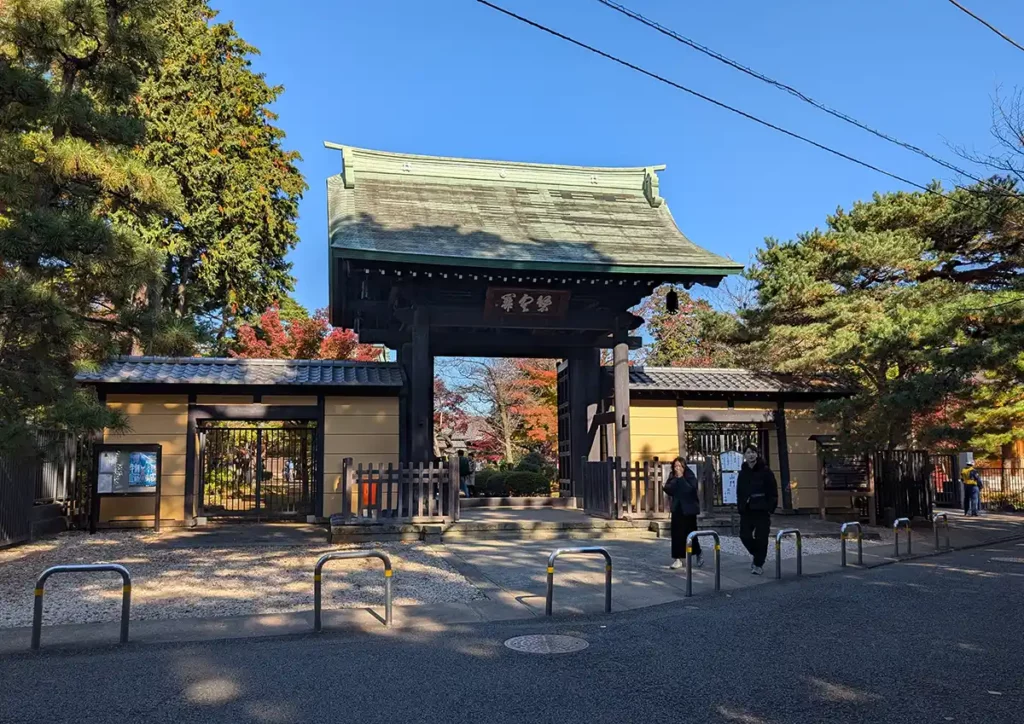
The little Shofuku-den hall was built in memory of the cat who inspired the Maneki-neko statues. This part of the temple is where you’ll find the hundreds of cat statues; people bring the figures back to the temple as an offering when they believe their wish has been granted.
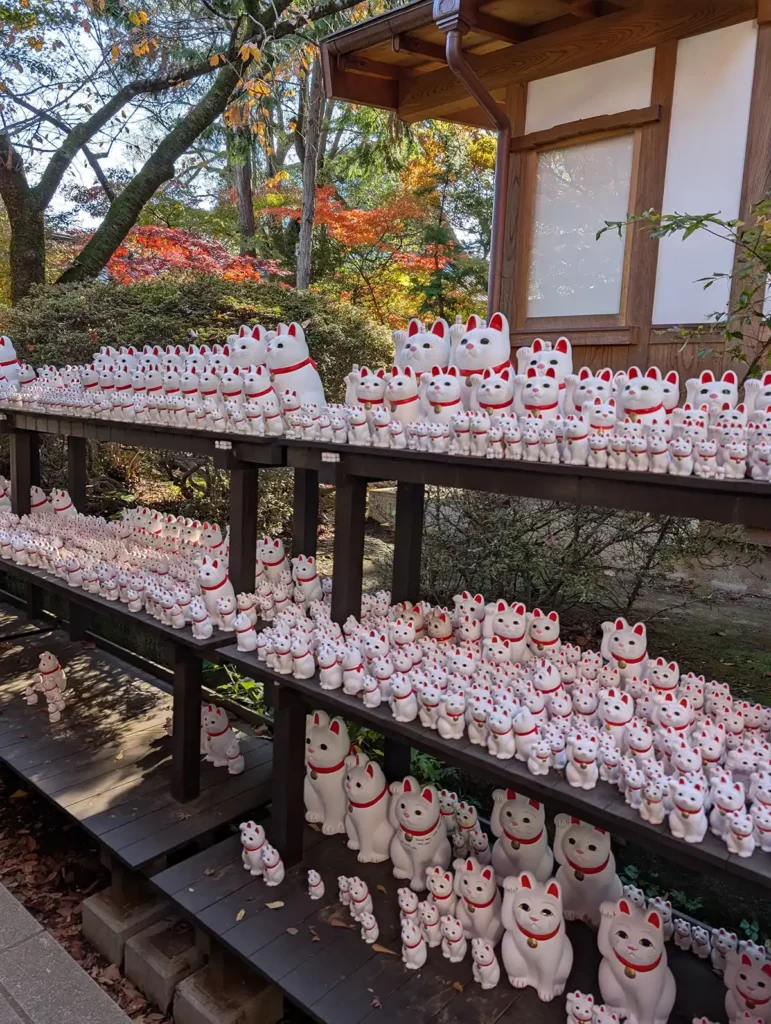
Top-rated Gōtokuji Temple tours
Meet the lucky cats in suburban Tokyo: Gotokuji walking tour
Tokyo Gotokuji unique temple walking tour for cat lovers
Tokyo off the beaten path 6hr private tour with licensed guide
When to visit
Each season brings its own special charm at Gōtokuji, and while you’re very unlikely to be the only visitor, its slightly out-of-the-way location means it’s never as crowded as the famous Sensō-ji temple in Asakusa.
The gardens at Gōtokuji are very peaceful, and there’s something to see during every season.
Spring (March to May): Cherry blossoms create a stunning backdrop for the temple buildings. Temperatures range from 10-20°C (50-68°F), ideal for exploring the grounds.
Summer (June to August): Hydrangeas bloom throughout the temple gardens. While temperatures can reach 30°C (86°F) with high humidity, the temple grounds offer plenty of shade.
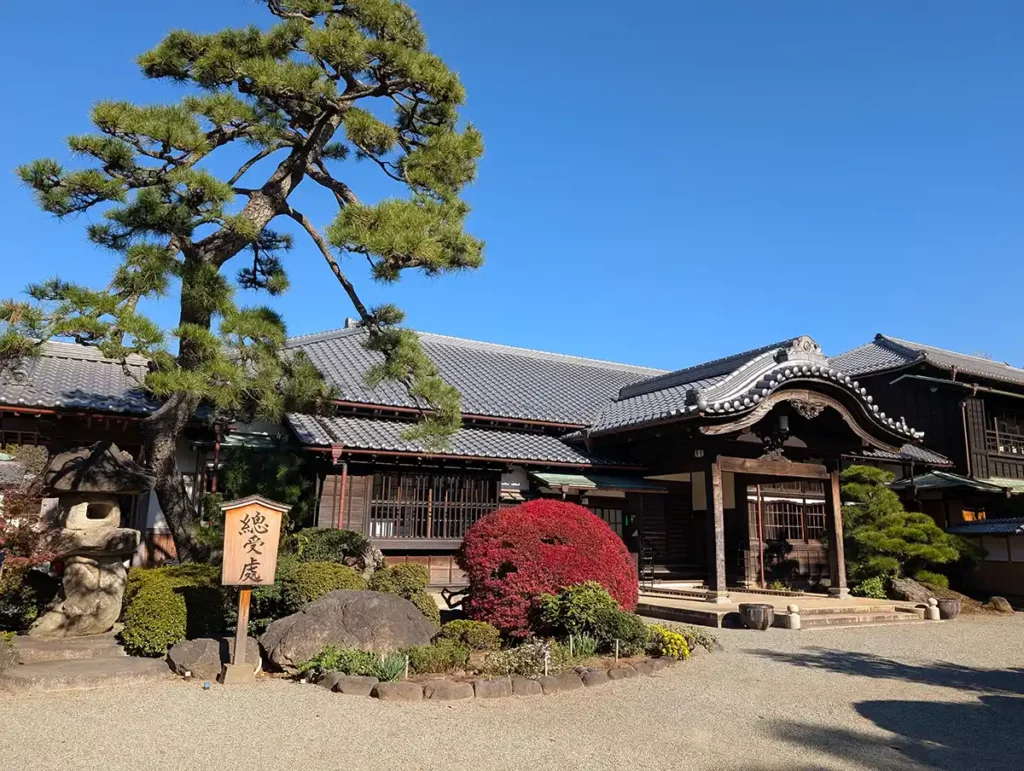
Autumn (September to November): I visited in late November, and the Japanese maple trees were so pretty with their leaves turning brilliant shades of red and orange. Comfortable temperatures of 15-20°C (59-68°F) make this a popular time to visit the cat temple.
Winter (December to February): Though temperatures drop to 5-10°C (41-50°F), clear skies offer excellent views of the pagoda against bare branches. If you’re lucky enough to have some snow during your trip to Tokyo then the beautiful grounds are particularly atmospheric.
Buying a lucky cat to take home
The cats temple office next to the main hall sells Maneki-neko figures in a range of sizes, from tiny ones smaller than a postage stamp, up to large ones bigger than my own actual cat.
If you want to buy a Maneki-neko, you should make sure you get to the temple in the morning, as when I visited around 12pm they had sold out of most sizes. I ended up having to buy quite a large one and then needed to buy a suitcase and extra luggage allowance to get it home!
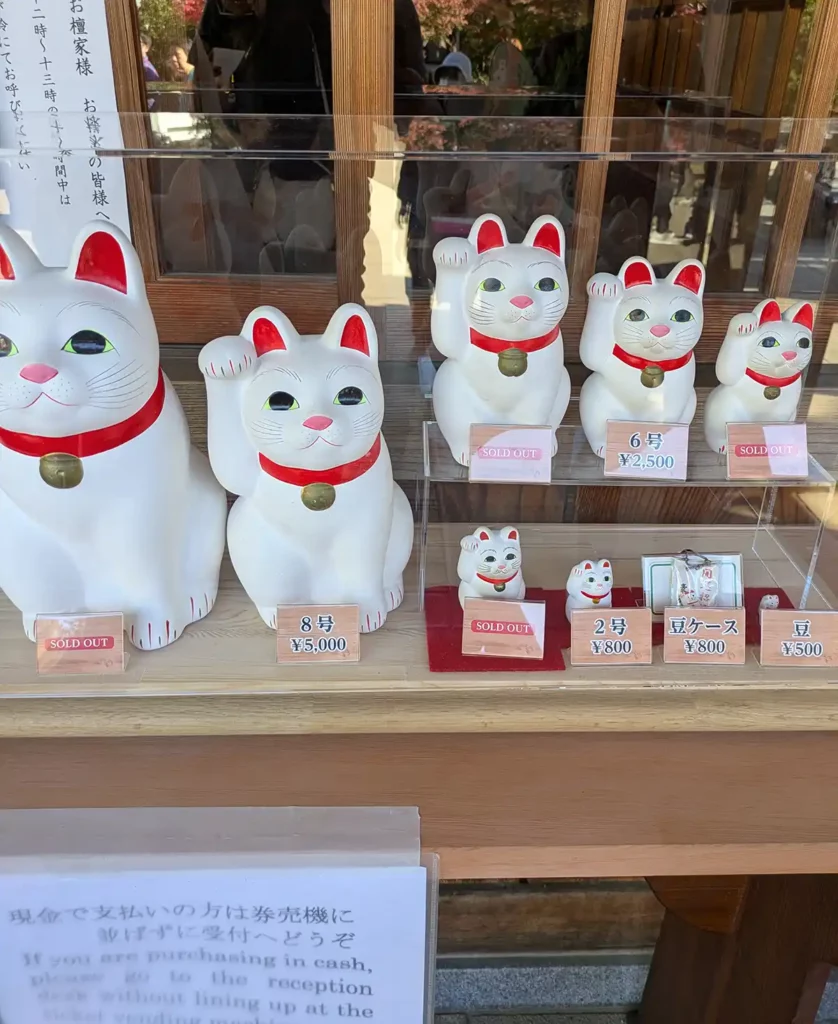
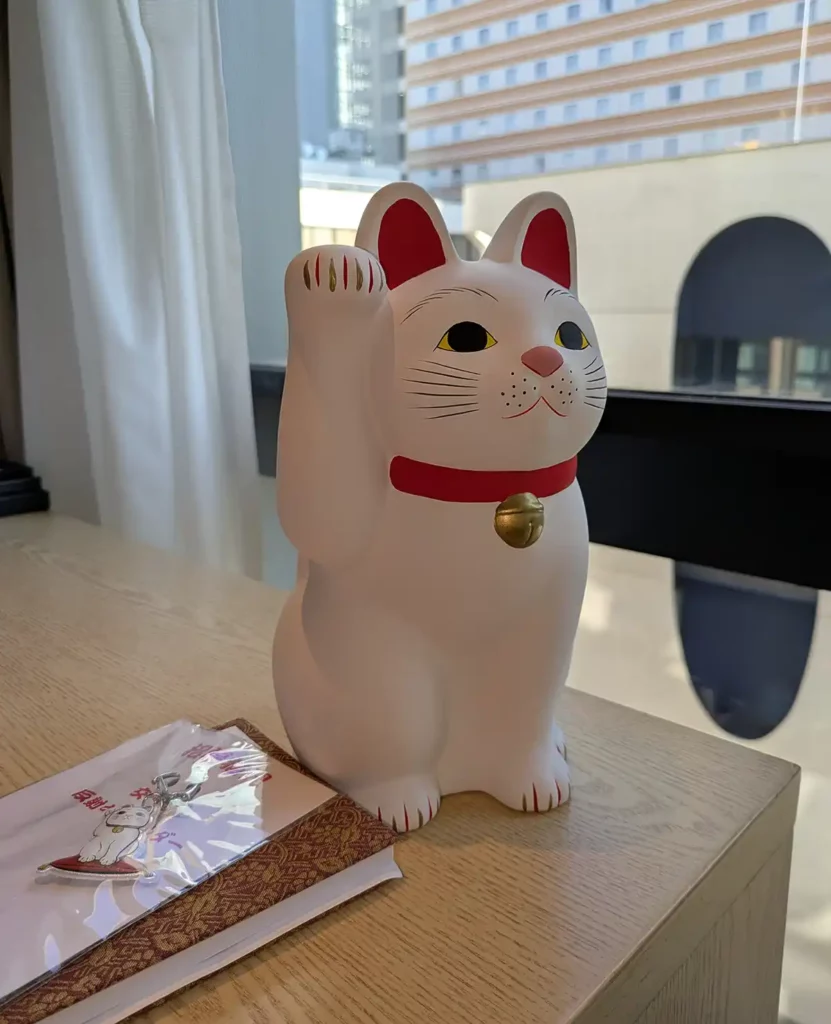
To buy items from the temple office, you have the option to use a machine to place your order and pay with a card (it’s harder than it looks!). If you use the machine, you’ll get a receipt which you can take to the counter. If you’d rather pay with cash, you can go straight to the counter. There are two queues, one for card orders and one for cash payments.
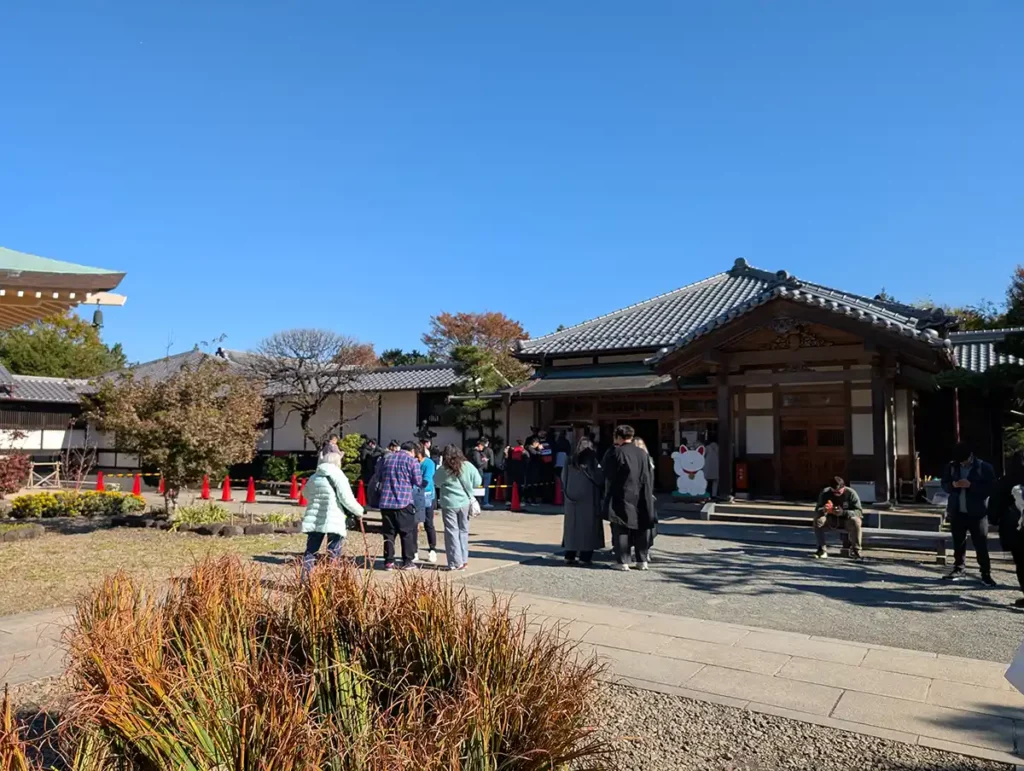
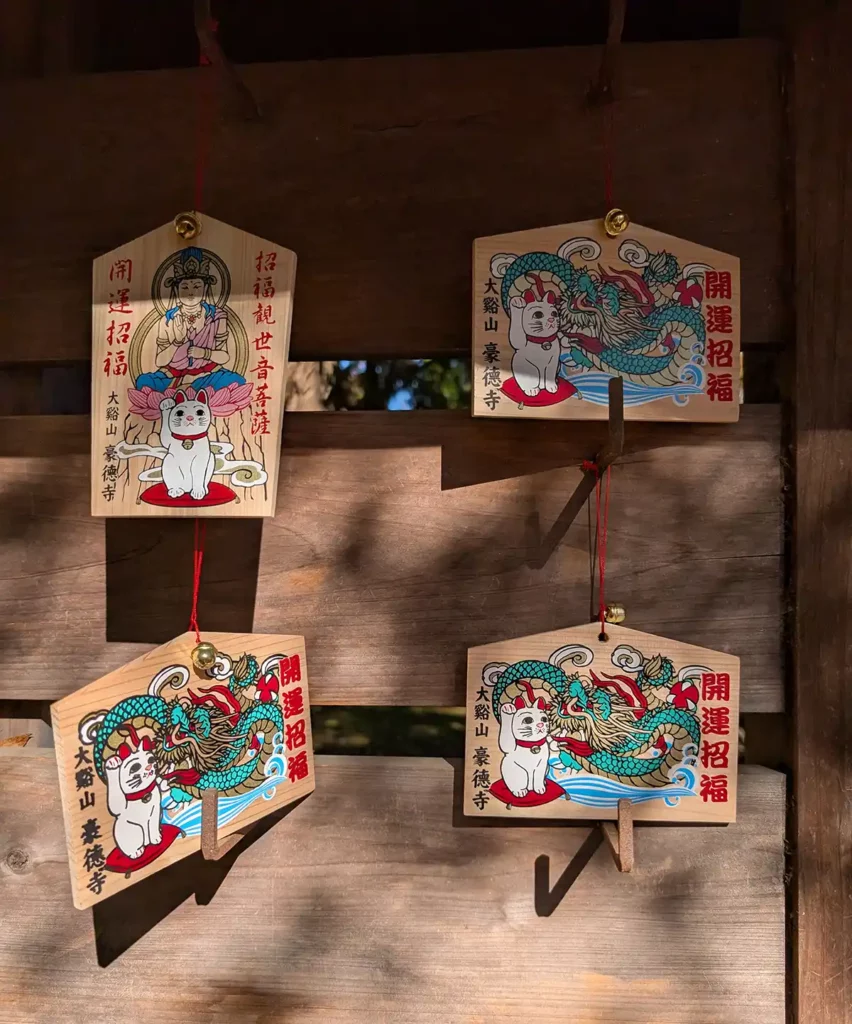
Would you like to save this?
The office also sells ema (wooden prayer plaques) to write your wishes on, along with other small cat-themed items. Gōtokuji was the first temple I visited in Japan, so I bought my goshuincho stamp book and got my first goshuin here too.
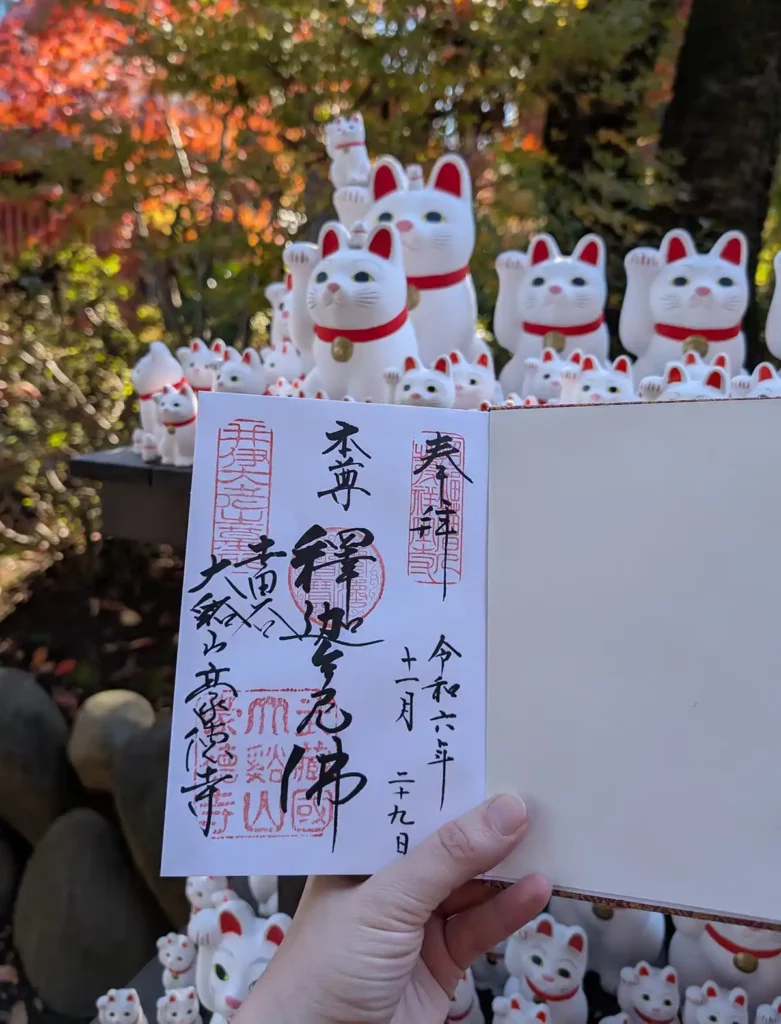
Once you’ve got your Maneki-neko, you should make a wish and take it home with you. If your wish is granted, you can bring it back to the temple to join the others and keep hold of the good fortune.
How to get to Gōtokuji temple on the lucky cat train
Taking the lucky cat train on the Setagaya Line
The best way to get to Gōtokuji lucky cat temple Tokyo is by taking the lucky cat train to Miyanosaka Station (Google Maps link). From Miyanosaka Station, it’s a short walk to Gōtokuji temple. I love cats and trains so there’s no way I would have missed this part!
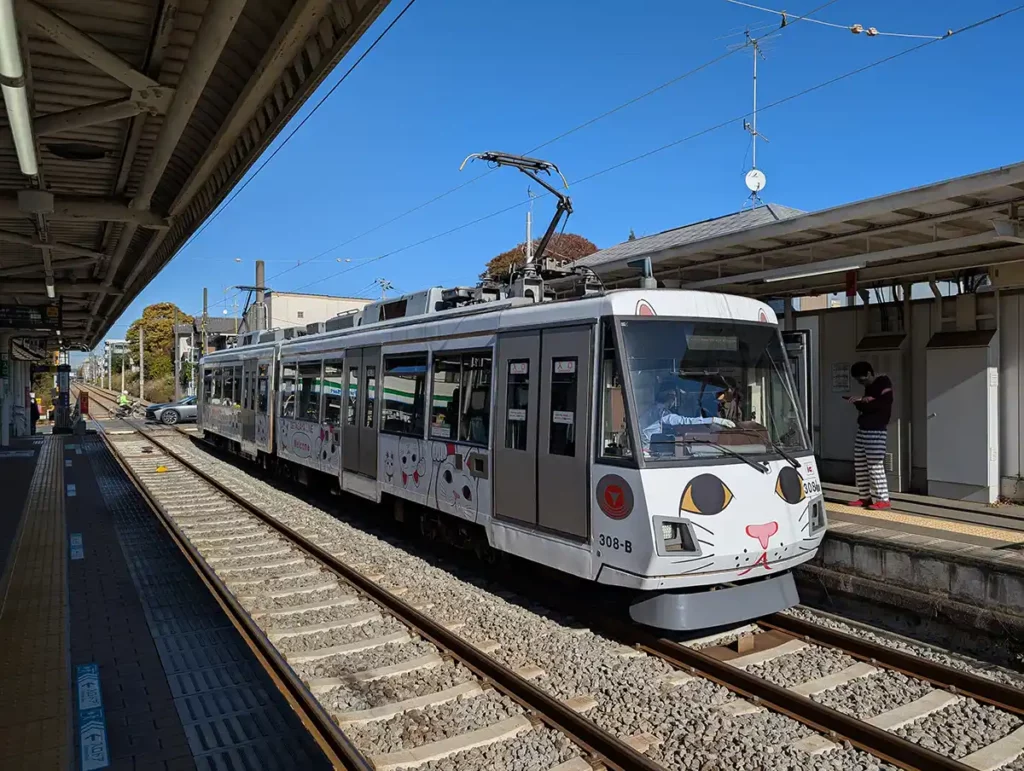
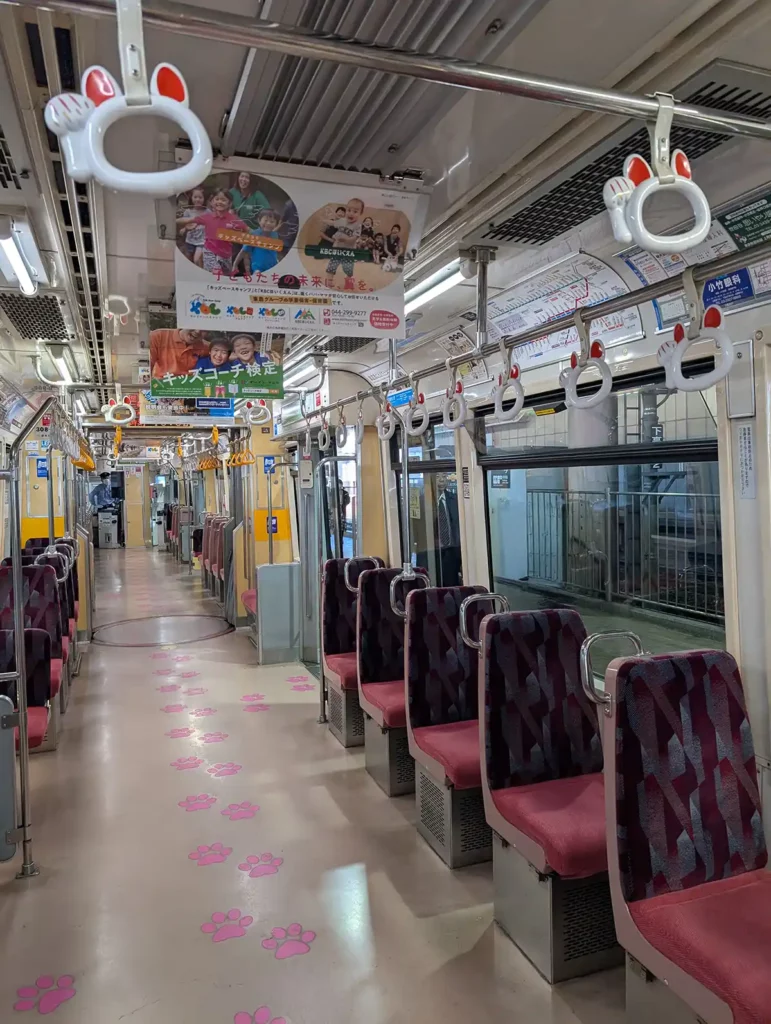
This adorable train decorated with a cat face on the front, grab handles in the shape of the Maneki-neko’s raised paw and paw prints on the floor runs on the Setagaya line from Shimo-takaido Station to Sangenjaya Station.
If you’re staying in western or central Tokyo, then getting to the Setagaya Line for the ride to Gōtokuji Temple is really easy.
From Shinjuku:
Take the Keiō Line to Shimo-takaido Station or the Odakyu Line to Gōtokuji Station
From Shibuya:
Take the Den-en-toshi Line to Sangenjaya Station
From Asakusa:
Take the Ginza Line to Omote-Sando Station and change to the Hanzomon Line for Sangenjaya Station
From Tokyo Station:
Take the Chiyoda Line to Gōtokuji Station
Actually catching the cat train takes patience, planning or a bit of luck. There’s only one cat train running on the line, and the other trains are just normal trains.
While I was waiting to go back to my hotel in Shinjuku via Shimo-takaido, I saw the cat train arriving on the opposite platform. I knew it would have to go down to Sangenjaya then come back, so I let multiple boring trains go past until the cat train arrived!
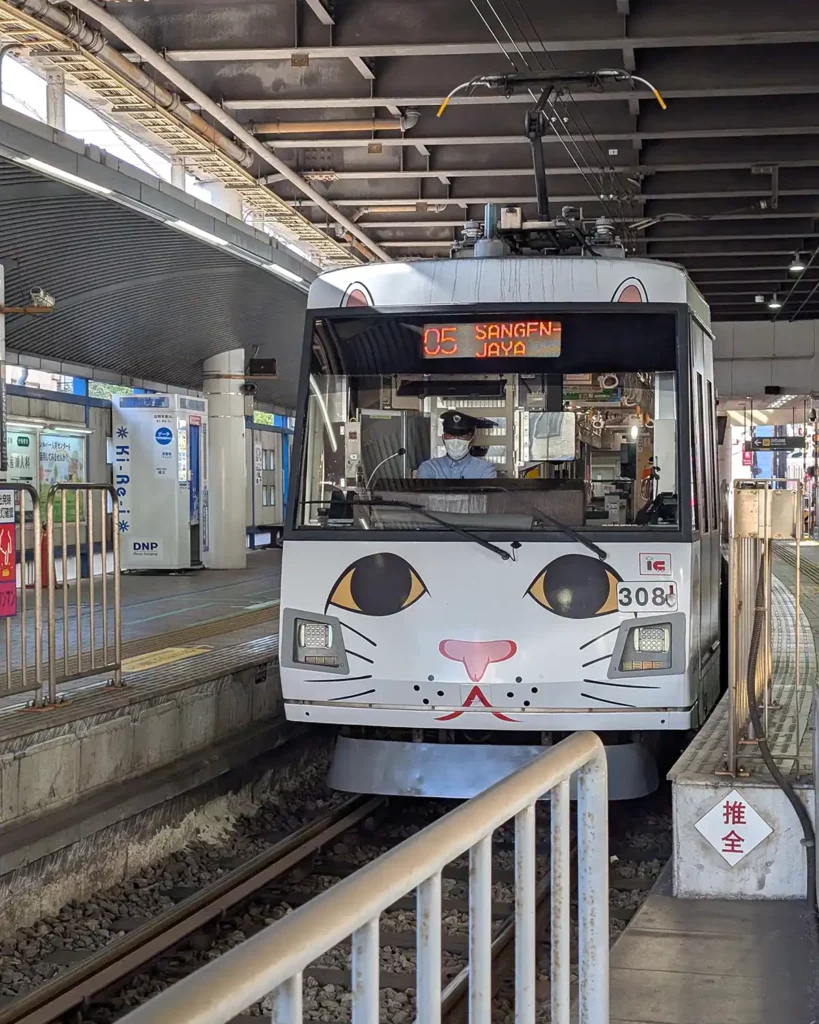
The line operates 7 days a week, but the special cat train doesn’t run every day. If travelling on the lucky cat train to Gōtokuji is as important to you as it was to me, it’s worth checking the online timetable when you’re planning your Tokyo itinerary.
Facilities at Gōtokuji temple
The temple has vending machines for drinks (decorated with beckoning cats, of course) and clean toilets.
This will be massively TMI, but the toilets at Gotokuji were my first experience of Japanese toilets outside my hotel – I was very surprised and delighted when it started playing birdsong as I sat down!
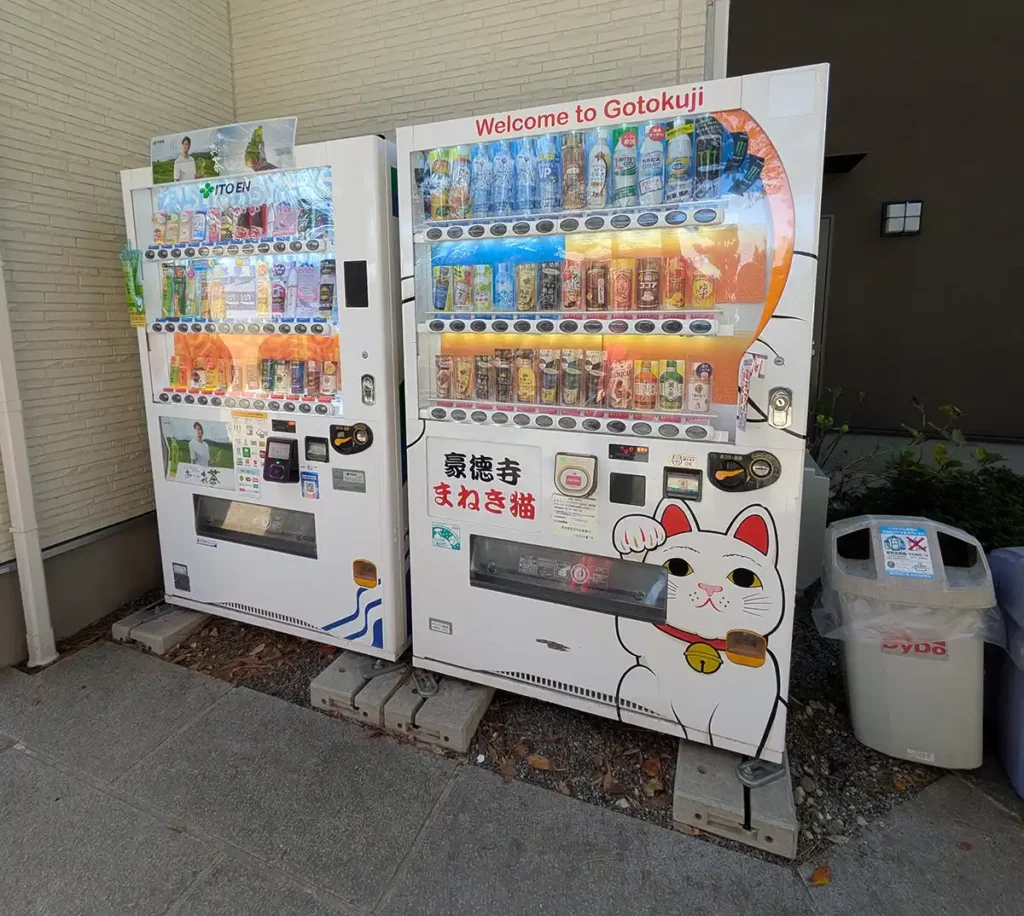
More cat-related things to do in Tokyo
After visiting Gōtokuji Temple, you can continue your cat-themed Tokyo exploration with these attractions.
Cat-themed treats in Gōtokuji
If you walk back to Gōtokuji Station, don’t miss the Maneki-neko-shaped treats at Rarasand bakery. The bakery has beckoning cats filled with a range of flavours alongside a café menu.
Imado Shrine
Imado Jinja is a Shinto shrine which also claims to be the origin of the lucky cat figure. The shrine is dedicated to the first married couple in Shinto mythology; the “mother and father” of the Japanese islands. Worshippers pray here for happy romantic relationships.
Like Gōtokuji, Imado Jinja has lots of Maneki-neko figures, but you’ll also see pairs of cats as both statues and on the ema prayer plaques.
Shinjuku 3D cat billboard
One of the most famous cats in Tokyo is the one who lives inside a huge billboard in central Shinjuku. The adorable calico cat rolls around, chats to the people gathered below and wears different outfits – when I was there he was putting his head through a hole in the screen and reappearing on another screen on the opposite side of the street.
There are frequent short displays, and a longer show every 15 minutes.
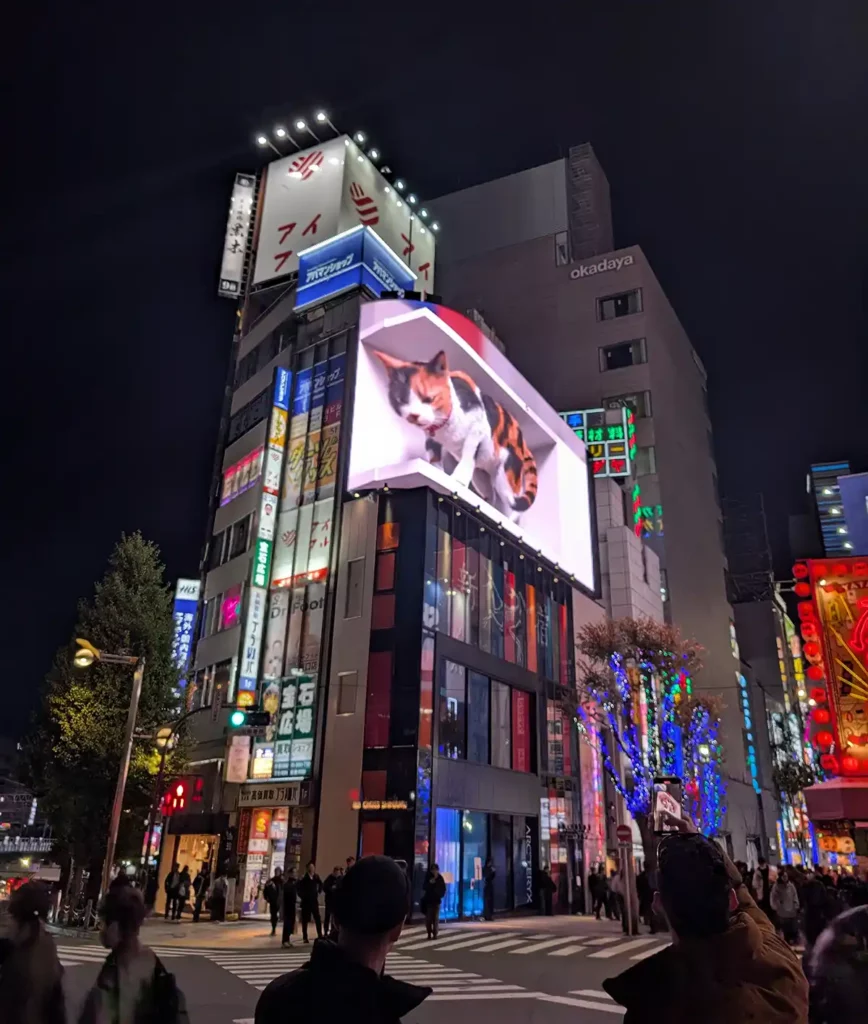
Yanaka Ginza
The traditional Yanaka Ginza shopping street and the surrounding area are known as “cat town”, for the cats who live there and the wide range of cat-related souvenirs on sale in the neighbourhood’s independent shops. Some visitors have described it as a calmer, more traditional version of the famous Takeshita Street in Harajuku – with added cats!
Kagurazaka Bakeneko Festival
Every year around Halloween, people in Kagurazaka dress up as cats and take to the streets for the Bakeneko (Supernatural Cat) Parade. Visitors to Tokyo can take part too – just don’t forget your cat costume!
Cat cafés
Tokyo is full of cat (and other animal) cafés but Japan has very different attitudes to animal welfare compared to what I’m used to in the UK. There are some cat cafés that are more ethical, for example where the cats can be adopted, or where you can help to socialise kittens, but I’m uncomfortable with recommending them without going there myself and checking out their credentials.
If you have first-hand experience and can vouch for any cat cafes in Tokyo, please let me know in the comments.
Summary – is Gōtokuji Temple worth visiting?
Whether you’re a cultural enthusiast, cat lover or simply seeking a peaceful suburban escape from Tokyo’s busy centres, Gōtokuji Temple offers a rewarding visit throughout the year, and taking the cat train to get there makes it even more special.
The Gōtokuji cat temple’s unique combination of spiritual significance and lucky cat folklore makes it an unforgettable addition to any cat-lover’s Tokyo itinerary.

